
The Amazon River in South America is the largest river by discharge volume of water in the world, and the disputed longest river system in the world in comparison to the Nile.

Gonzalo Pizarro y Alonso was a Spanish conquistador and younger paternal half-brother of Francisco Pizarro, the conqueror of the Inca Empire. Bastard son of Captain Gonzalo Pizarro y Rodríguez de Aguilar (senior) (1446–1522) who as colonel of infantry served in the Italian campaigns under Gonzalo Fernández de Córdoba, and in Navarre, with some distinction, and María Alonso, from Trujillo. He was the half brother of Francisco and Hernándo Pizarro and the full brother of Juan Pizarro.

Iquitos is the capital city of Peru's Maynas Province and Loreto Region. It is the largest metropolis in the Peruvian Amazon, east of the Andes, as well as the ninth-most populous city in Peru. Iquitos is the largest city in the world that cannot be reached by road that is not on an island; it is only accessible by river and air.
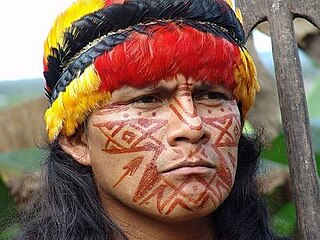
The Shuar are an Indigenous people of Ecuador. They are members of the Jivaroan peoples, who are Amazonian tribes living at the headwaters of the Marañón River.
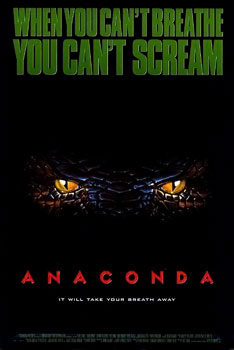
Anaconda is a 1997 American adventure horror film directed by Luis Llosa and starring Jennifer Lopez, Ice Cube, Jon Voight, Eric Stoltz, Jonathan Hyde and Owen Wilson. It focuses on a documentary film crew in the Amazon rainforest that is captured by a snake hunter who is hunting down a giant, legendary green anaconda. The film received mostly negative reviews but was a box office success, grossing $136.8 million worldwide against a $45 million budget, and also became a cult classic. It was followed by a series of films.
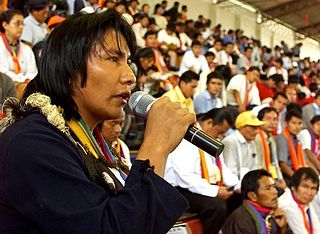
The Sápara, also known as Zápara or Záparo, are an indigenous people native to the Amazon rainforest along the border of Ecuador and Peru. They once occupied some 12,000 mi² between the Napo River and the Pastaza. Early in the 20th century, there were some 200,000 Zapara. From the year 2009 on the Ecuadorian Zápara call themselves Sápara. The official name is Nación Sápara del Ecuador (NASE). It means Sápara Nation of Ecuador. The president of this nation is Klever Ruiz. The Sápara Nation was officially registered by CONDENPE – the Council of Development of the nationalities and peoples of Ecuador – on September 16, 2009. The current name of the organisation is the result of a unification process of upriver and downriver communities. There was a conflict between these different groups about their authentic ethnic identity in the last years of the 20th century and the beginning of the 21st century. With this unification this conflict seems to be solved. CONDENPE confirms as well officially the legal status of autonomy or self-government of the Sápara Nation of Ecuador N.A.S.E. and confirms their territory between the rivers Pindoyacu, Conambo and Alto Corrientes in the province of Pastaza. It is confirmed as well that the head office of NASE is the city of Shell, Pastaza.
Willard DeMille Price was a Canadian-born American traveller, journalist and author.
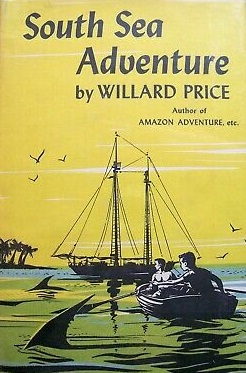
South Sea Adventure is a 1952 children's book by the Canadian-born American author Willard Price featuring his "Adventure" series characters, Hal and Roger Hunt. The novel depicts an expedition to the South Pacific to capture animals for a zoo, and introduces the recurring villain Merlin Kaggs.
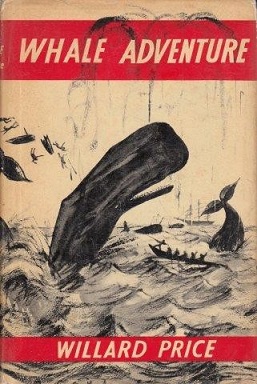
Whale Adventure is a 1960 children's book by the Canadian-born American author Willard Price featuring his "Adventure" series characters, Hal and Roger Hunt.

African Adventure is a 1963 children's book by the Canadian-American author Willard Price featuring his "Adventure" series characters, Hal and Roger Hunt.

Elephant Adventure is a 1964 children's book by the Canadian-born American author Willard Price featuring his "Adventure" series characters, Hal and Roger Hunt. It is set in the Mountains of the Moon in Uganda and depicts Hal and Roger's attempts to capture elephants for a zoo.
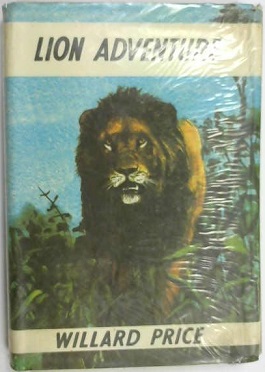
Lion Adventure is a 1967 children's novel by the Canadian-born American author Willard Price featuring his "Adventure" series characters, Hal and Roger Hunt. It depicts their attempts to capture a lion for a zoo, which is hampered by a dangerous man-eating lion who parallels the well-known Tsavo maneaters.

Gorilla Adventure is a 1969 children's book by the Canadian-born American author Willard Price featuring his "Adventure" series characters, Hal and Roger Hunt. It depicts an expedition to capture a giant mountain gorilla for a circus.
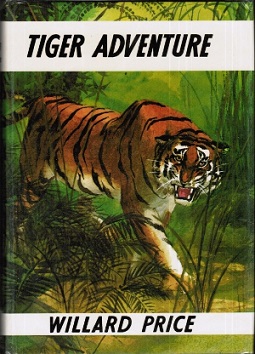
Tiger Adventure is a 1979 children's book by the Canadian-born American author Willard Price. In his "Adventure" series featuring characters Hal and Roger Hunt. It depicts an expedition to India to capture animals, including tigers, for a zoo. They encounter an annoying city boy, named Vic Stone, who is a constant pain to their travels. He blames everything on Hal and Roger, even when it is his fault.

Ilex guayusa is a species of tree of the holly genus, native to the Amazon Rainforest. One of four known caffeinated holly trees, the leaves of the guayusa tree are harvested fresh and brewed like a tea for their stimulative effects.
Hal and Roger Hunt are fictional characters appearing in the children's Adventure Series novels, by Canadian-born American author Willard Price. The sons of a world-renowned animal collector John Hunt, Hal and Roger have grown up alongside exotic and dangerous wildlife. In Amazon Adventure, the boys' literary debut, Hal is 18 years old, and Roger is 13 years old.
The Adventure series is a collection of children's adventure novels by Willard Price. The original series, comprising 14 novels, was published between 1949 and 1980, and chronicles the adventures of teenagers Hal and Roger Hunt as they travel the world collecting exotic and dangerous animals. Beginning in 2012, Anthony McGowan published four more novels in the series, which featured Hal and Roger's children.

The Jivaroan peoples are the indigenous peoples in the headwaters of the Marañon River and its tributaries, in northern Peru and eastern Ecuador. The tribes speak the Chicham languages.

Amazonian Kichwas are a grouping of indigenous Kichwa peoples in the Ecuadorian Amazon, with minor groups across the borders of Colombia and Peru. Amazonian Kichwas consists of different ethnic peoples, including Napo Kichwa and Canelos Kichwa. There are approximately 419 organized communities of the Amazonian Kichwas. The basic socio-political unit is the ayllu. The ayllus in turn constitute territorial clans, based on common ancestry. Unlike other subgroups, the Napo Kichwa maintain less ethnic duality of acculturated natives or Christians.
















